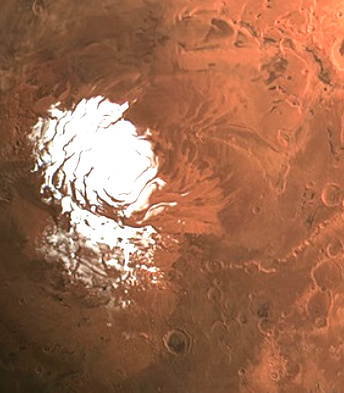New tech probes Martian core
 Scientists have used a deep planetary scan to probe the Martian core.
Scientists have used a deep planetary scan to probe the Martian core.
Seismologists from The Australian National University (ANU) have developed a new method to scan the deep interior of planets in the Solar System to confirm whether they have a core at the heart of their existence.
The scanning method, which is similar to an ultrasound scan that uses sound waves to generate images of a patient's body, requires only a single seismometer on a planet's surface in order to work. It can also be used to confirm the size of a planet's core.
Using the ANU model to scan the entirety of Mars' interior, the researchers determined the Red Planet has a large core at its centre - a theory first confirmed by a team of scientists in 2021.
The researchers determined that the Martian core, which is smaller than Earth's, is about 3,620 kilometres in diameter.
“Our research presents an innovative method using a single instrument to scan the interior of any planet in a way that's never been done before,” says ttudy co-author Professor Hrvoje Tkalčić, from the ANU Research School of Earth Science.
Confirming the existence of a planetary core, which the researchers refer to as the engine room of all planets, can help scientists learn more about a planet's past and evolution. It can also help scientists determine at what point in a planet's history a magnetic field formed and ceased to exist.
The core plays an active role in sustaining a planet's magnetic field. In the case of Mars, it could help explain why, unlike Earth, the Red Planet no longer has a magnetic field, which is critical to sustaining all life forms.
“Modelling suggests that the Martian core is liquid. While it is made up of mostly iron and nickel, it could also contain traces of lighter elements such as hydrogen and sulphur. These elements can alter the ability of the core to transport heat,” lead author Dr Sheng Wang, also from ANU, said.
“A magnetic field is important because it shields us from cosmic radiation, which is why life on Earth is possible.”
Using a single seismometer on Mars' surface, the ANU team measured specific types of seismic waves.
The seismic waves, which were triggered by marsquakes, give off a spectrum of signals, or ‘echoes’, that change over time as they reverberate throughout the Martian interior.
These seismic waves pierce through and bounce off the Martian core.
Professor Tkalčić said researchers are interested in the ‘late’ and ‘weaker’ signals that can survive hours after they are emitted from quakes, meteoroid impacts and other sources.
“Although these late signals appear to be noisy and not useful, the similarity between these weak signals recorded at various locations on Mars manifests itself as a new signal that reveals the presence of a large core in the Red Planet's heart,” Professor Tkalčić said.
“We can determine how far these seismic waves travel to reach the Martian core but also the speed at which they travel through Mars' interior. This data helps us make estimations about the size of Mars' core.”
More details are accessible here.








 Print
Print